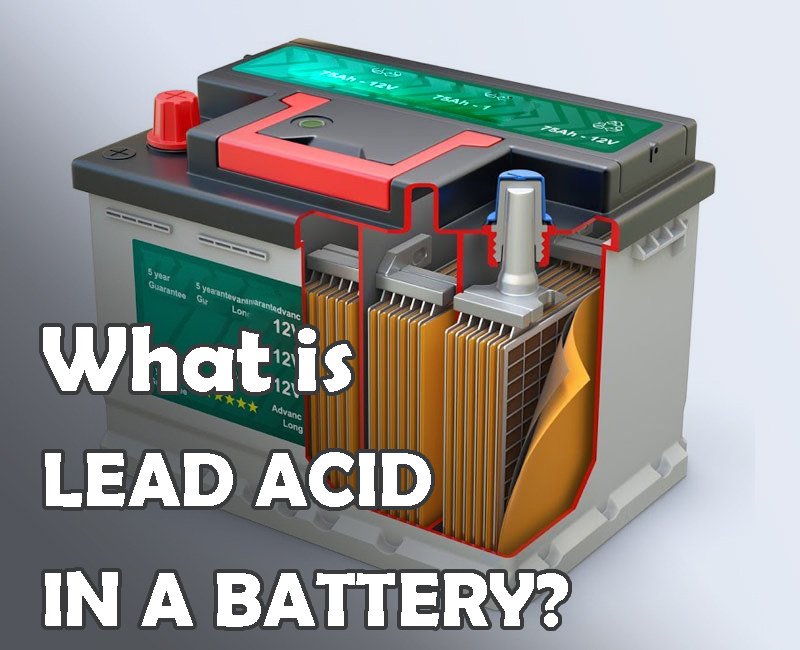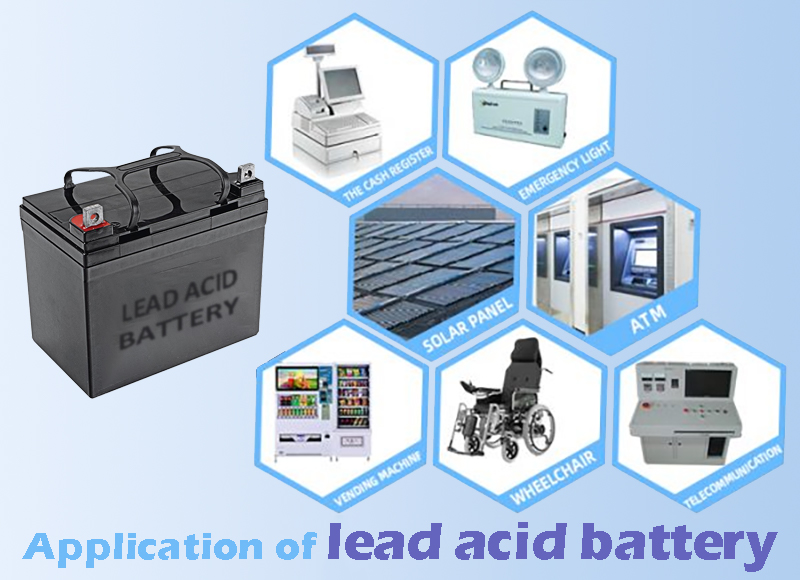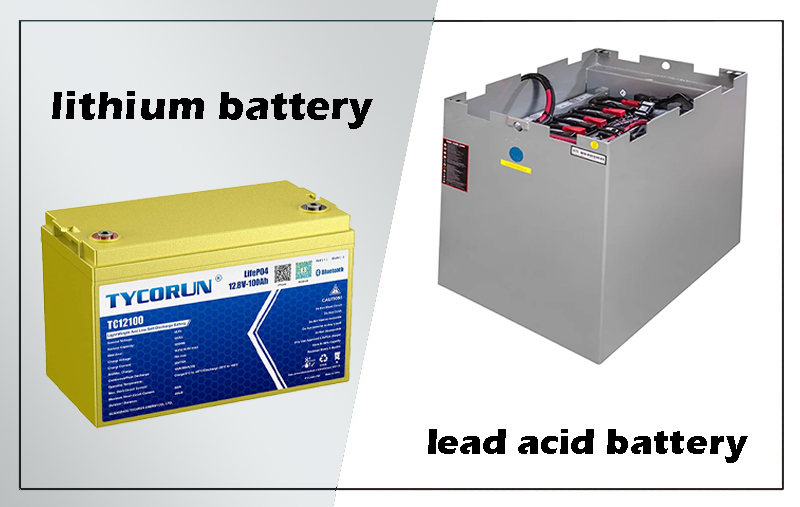
Main content:
- What is a lead-acid battery?
- Are lead-acid batteries rechargeable?
- What are the advantages of using a lead acid battery?
- What are the disadvantages of using a lead acid battery?
- Where are lead-acid batteries used?
- Do lead-acid batteries need water?
- Which is a better battery - lead-acid or lithium?
- Can I replace lead acid battery with lithium-ion battery?
- Final thoughts
Lead-acid batteries have been with us since the 19th century. They have been widely used for different applications - from starting batteries for automobiles to marine batteries for energy applications in marine emergency equipment. This article is designed to help you understand how the lead acid battery functions. You are going to learn the following by reading this article:
- The advantages and disadvantages of using a lead-acid battery;
- How to take care of your lead-acid battery;
- Why you should consider replacing your lead-acid battery with a modern lithium battery.
1.What is a lead acid battery?
A lead acid battery, similar to other types of batteries, has two electrodes. The cathode is metallic lead oxide, and theanode is a spongy (or porous) lead. Both electrodes are submerged in acid (sulfuric), thus the name, lead acid battery.

2.Are lead-acid batteries rechargeable?
Yes, lead-acid batteries are rechargeable. However, it would be best to keep a keen eye on your lead-acid battery, so it does not overcharge and over-discharge. When your lead-acid battery overcharges, it is most likely to thermally runaway. Thermal runaway means that your battery overheats and damages internal components. If, on the other hand, you decide to over-discharge your lead-acid battery, you'll cause irreversible damage. It is best to control the depth of discharge of lead-acid batteries between 30% and 50%, and prevent it from exceeding 70%.
3.What are the advantages of using a lead acid battery?
There are several advantages associated with using lead-acid batteries;
- Low initial designcost - The manufacturing cost of lead-acid batteries is low, the manufacturing process is relatively simple, and the raw materials are cheap, making their cost relatively lower than other batteries. However, since it is not as durable as lithium-ion batteries, and it requires certain maintenance costs, the overall cost is higher than that of lithium-ion batteries.
- High recycling value - the important components of lead-acid batteries are lead and lead compounds, the lead content is as high as 60% of the total battery mass, and the residual value of used batteries is high. However, waste lithium batteries have higher recycling value. The positive electrodes, negative electrodes, separators, electrolytes and other materials that make up lithium ion batteries contain a large amount of valuable metals. The economic benefits of effectively recycling used lithium batteries are very considerable.
- Durability - lead acid batteries, just like lithium batteries, are durable if handled properly. Still, its cycle life is far less than that of lithium batteries.
4.What are the disadvantages of using a lead acid battery?
While the advantages of using lead-acid batteries may seem considerable, there are also many disadvantages:
- Lower energy density - lead-acid batteries have a poor weight-to-energy ratio. It, therefore, means they are heavy and do not pack a lot of power.
- Non-environmentally friendly - lead is a poisonous metal. As such, it has a devastating effect on the environment after the battery is no longer safe for use.
- Restrictions on transporting flooded lead-acid batteries - these restrictions result from the devastating effect lead-acid batteries have on the environment.
- Slower charging - compared to other rechargeable batteries such as lithium-ion, lead-acid batteries charge way slower, increasing downtime.
- Maintenance required - When comparing AGM battery vs lead acid, unlike AGMs, flooded lead-acid batteries require regular maintenance by topping off the acid.
- No overcharge protection- lead-acid batteries cannot withstand overcharging - they'll easily get damaged. If you do not want to overcharge your lead acid battery, consider acquiring a smart charger that will detect when the battery is fully charged and cut off the charging current.
5.Where are lead-acid batteries used?

It depends on the type of lead acid battery. There are three primary types of lead-acid batteries; sealed lead-acid (SLA), absorbent glass mat (AGM), and valve-regulated lead-acid batteries (VRLA). The table below summarizes the type of lead-acid battery and its use:
|
Battery type |
Application |
|
|
1 |
Sealed Lead-Acid (SLA) |
Healthcare equipment and power backup in UPS |
|
2 |
Absorbent Glass Mat (AGM) |
They are primarily used to deep cycle in marine applications. It can also be used in vehicles. |
|
3 |
Valve-regulated Lead-Acid (VRLA) |
They are primarily used for power backup for institutions such as banks, hospitals, etc. and for powering small equipment such as electric wheelchairs. |
6.Do lead-acid batteries need water?
Yes, it is important to add water to your lead-acid batteries periodically. Water helps prevent an exothermic reaction to the electrodes that can be caused when your battery’s lead plates are left exposed to oxygen and hydrogen. It is worth noting that you should not overwater or underwater your lead acid battery. Both overwatering and underwatering are detrimental to the lifespan of your lead-acid battery.
7.Which is a better battery - lead-acid or lithium?
Lithium batteries are by far better than lead-acid batteries because of the advantages associated with using them. Here are some of the benefits associated with using lithium rechargeable batteries over lead-acid batteries.

The table below summarizes why a lithium-ion battery is better than a lead acid battery:
|
Attribute |
Lithium-ion |
Lead-acid |
|
Energy density |
150 - 265 Wh/kg (lighter with more power) |
60 - 70 Wh/kg (heavier with lesser power) |
|
Voltage per cell |
3.7V(ternary lithium battery) |
2V |
|
Self-discharge rate |
3.5% per month |
4% per week |
|
Cycle life |
Up to 4,000 charging cycles (or more) and can be used for up to ten years with an average of one charge and discharge per day before DOD reaches 80% |
Up to 500 charging cycles before it becomes unfit for use |
|
Maintenance |
Maintenance-free |
Requires active maintenance |
|
Impact on the environment |
Can be disposed of as non-hazardous waste |
Lead, a poisonous metal, has a devastating effect on the environment. |
8.Can I replace lead acid battery with lithium-ion battery?
Yes, replacing your lead acid battery with a lithium-ion battery is possible. Infact, leading experts recommend replacing your lead acid with a lithium-ion battery because of what they can offer. The only thing you’ll need to look out for is the battery’s specifications. It would be best to replace your 12V lead acid battery with a 12V lithium-ion battery as Li-Ion batteries provide longer battery life.
9.Final thoughts
Lead-acid batteries are among the oldest rechargeable batteries. There are several advantages associated with using lead-acid batteries; lower acquisition costs, good recycling value and durability (if properly handled). It also has some disadvantages, including; lower energy density, non-environmentally friendliness, slower charging (increased downtimes) and irreversible damage caused by overcharging. While lead-acid batteries are good, it would be best if you consider replacing them with the best lithium batteries. Leading experts recommend replacing your lead acid battery with a lithium-ion battery, as it has more to offer and is cheaper in the long run.
Related article: lifepo4 vs lead acid, AGM vs flooded battery